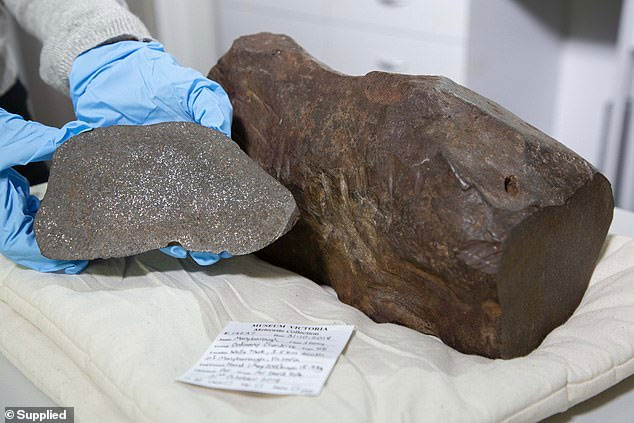A gold hunter spent nearly 4 years trying to break open a mysterious reddish-brown rock found near his home, but to no avail. When he brought it to a museum, scientists revealed that it was an incredibly rare find.
Daily Mail reported on July 17 that David Hole discovered the red rock buried near his home in Maryborough, Queensland, Australia in 2015.
In 2015, while metal detecting in the Maryborough Regional Park near Melbourne, the capital of Victoria, Australia, David Hole stumbled upon an unusual rock: it was very heavy, reddish-brown with some yellow spots, and, most notably, it set off his metal detector.
Suspicious that it contained gold, he took the object home and tried every method to open it. Despite using a saw, drill, grinder, sledgehammer, and even soaking it in acid, he could not break the rock’s structure.
After many unsuccessful attempts, Hole recently decided to take his “treasure” to the Melbourne Museum for identification, where he discovered the surprising truth. The rock he believed was filled with gold turned out to be a 4.6 billion-year-old meteorite, rarer than any precious metal.
“It looks like it has been carved and polished. This is because the meteorite melted as it entered Earth’s atmosphere,” said geologist Dermot Henry from the Melbourne Museum to the Sydney Morning Herald.

The rock thought to be trash is actually a part of a 4.6 billion-year-old meteorite.

Bill Birch (right), a geologist, stated that the meteorite greatly aids in determining the age of the Earth.
Bill Birch, a geologist, identified the rock as an H5 chondrite meteorite.
“The rock appears to have formed around the same time as the Earth, but its mineral composition is vastly different from present-day Earth,” Dr. Birch shared with Daily Mail Australia.
He added, “This is an important discovery that provides evidence about when and how the solar system formed. It also helps determine the age of the Earth.”
“Meteorite fragments offer the cheapest form of space exploration. They take us back in time to study the formation of the solar system, including Earth. Some are even older than the solar system itself, revealing how stars form and evolve to create elements in the periodic table. Some rarer meteorites may contain organic molecules like amino acids—the building blocks of life,” Henry further explained.
The two geologists do not know exactly where the meteorite that Hole found originated or how long it has been on Earth, but they have some guesses.
“It likely originated from the asteroid belt between Mars and Jupiter and was knocked out of orbit by an asteroid collision, eventually crashing into Earth,” Henry said. Radiocarbon dating indicates that the meteorite fell to our planet between 100 to 1,000 years ago.

















































